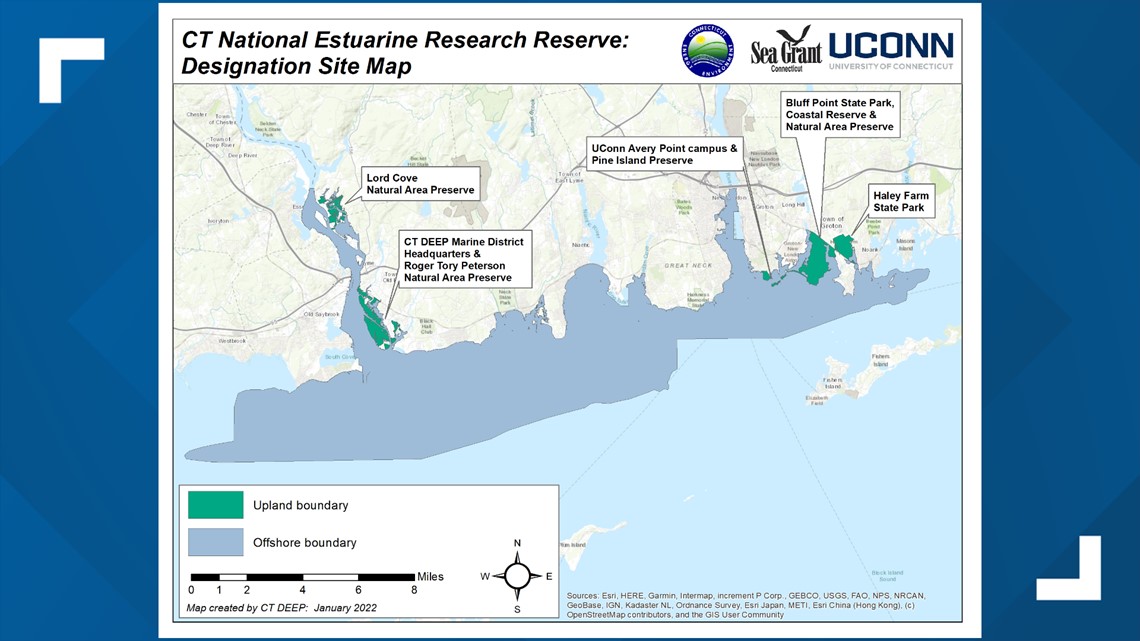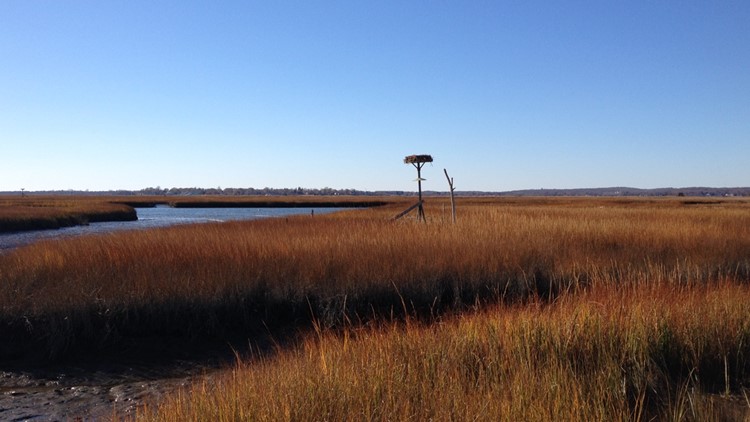GROTON, Conn. — Parts of Connecticut's coastline and waters are now designated as a "living laboratory" by the National Oceanic & Atmospheric Administration (NOAA).
NOAA, along with the Department of Energy and Environmental Protection (DEEP) and the University of Connecticut (UConn), made the announcement Friday.
Connecticut's coastal site is the country's 30th National Estuarine Research Reserve (NERR). It includes some properties in Lyme, Old Lyme, and Groton along with portions of the surrounding waters.
“The designation of the nation’s 30th National Estuarine Research Reserve in Connecticut represents a win for science-based decision making and helping to enhance environmental education at all levels for the people of Connecticut,” Gov. Ned Lamont said. “We’re excited that some of the amazing natural resources of Long Island Sound, the Connecticut River, and some of our state parks and natural area preserves will be utilized as a ‘living laboratory’ that can help advance national efforts in addressing issues such as climate change and environmental stewardship now and in the future.”


Connecticut joins other local coastal sites including the Hudson River estuary in New York, Narraganset Bay in Rhode Island, and Waquoit Bay in Massachusetts. All have been designated to protect and study estuarine systems.
Each reserve is led by a state organization with input from local partners, while NOAA provides funding and national guidance.
NERRs provide access to a variety of resources including municipal training on coastal best management practices, K-12 programs to engage students and teachers in hands-on science, expanded opportunities for estuarine research and long-term monitoring, and programs for environmental stewardship.
DEEP led the process to get the designation and worked with UConn, Connecticut Sea Grant (CTSG), and the Connecticut Audobon Society (CAS) among other local organizations and individuals. The process began in 2016 and the location was submitted in 2019.
The Connecticut NERRs includes the land areas of Lord Cove Natural Area Preserve, Roger Tory Peterson Natural Area Preserve (formerly Great Island Wildlife Management Area), Pine Island, Haley Farm State Park, and Bluff Point State Park, Coastal Reserve and Natural Area Preserve, as well as portions of the surrounding open-water areas of Long Island Sound and the Thames and Connecticut Rivers.
It also includes the DEEP Marine District Headquarters in Old Lyme and the UConn Avery Point campus in Groton.
“DEEP has been pursuing a Connecticut NERR for quite some time, and we’re thrilled to have reached this important milestone thanks to the efforts of a tremendous group of partner organizations,” DEEP Commissioner Katie Dykes said. “We look forward to working with our partners and NERR staff on important efforts and programming such as exploring efforts to sustain coastal habitats in the face of sea level rise and providing more opportunities for school-aged students to participate in real-world scientific field work. By doing so, these incredible estuarine places can be sustained and continue to support vital ecological and human uses.”
With the NERR officially designated, UConn will be taking on the role of leading the state agency responsible for the overall direction of the programs and goals with the Avery Point campus providing primary resources.
For more information vising DEEP's website or learn more about the National NERRs system on NOAA's website.
Jennifer Glatz is a digital content producer at FOX61 News. She can be reached at jglatz@fox61.com.
---
Have a story idea or something on your mind you want to share? We want to hear from you! Email us at newstips@fox61.com
---
HERE ARE MORE WAYS TO GET FOX61 NEWS
Download the FOX61 News APP
iTunes: Click here to download
Google Play: Click here to download
Stream Live on ROKU: Add the channel from the ROKU store or by searching FOX61.
Steam Live on FIRE TV: Search ‘FOX61’ and click ‘Get’ to download.



